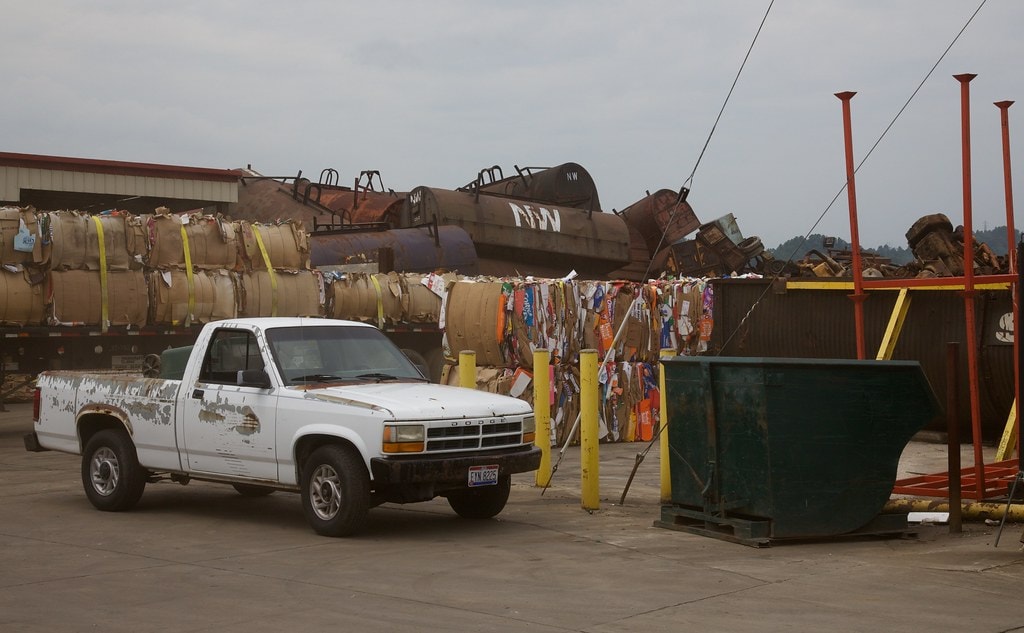Eco-Friendly Car Disposal: A Sustainable Approach
CASH FOR CARS &
FREE TOWING
Understanding the Environmental Impact
The disposal of end-of-life vehicles poses significant environmental challenges. Cars contain various hazardous materials, including lead-acid batteries, brake fluids, air conditioning refrigerants, and mercury switches. If not properly managed, these substances can leak into the ground, contaminating soil and water resources, and posing risks to wildlife and human health. Moreover, the hulks of scrapped cars contribute to landfill volume, and the non-biodegradable materials they contain can persist in the environment for centuries.

The energy-intensive process of manufacturing new car parts also has a substantial carbon footprint. By recycling and reusing automotive parts, we can significantly reduce the demand for new parts, thereby lowering the overall energy consumption and greenhouse gas emissions associated with automotive manufacturing.
Responsible disposal and recycling of vehicles not only mitigate these environmental risks but also conserve valuable resources. Metals such as steel, aluminum, and copper can be recycled and reused, reducing the need for new raw material extraction and the environmental degradation it often entails.
Responsible Disposal Practices
To minimize the environmental impact of disposing of end-of-life vehicles, it is crucial to adopt responsible disposal practices. This involves ensuring that all hazardous materials are identified and handled correctly. Fluids such as oil, coolant, and gasoline should be drained and disposed of or recycled in accordance with local environmental regulations. Batteries and other components containing heavy metals should be removed and sent to specialized recycling facilities.
After hazardous materials have been safely managed, the remaining vehicle can be dismantled for parts. Many components, such as engines, transmissions, and alternators, can be refurbished and sold for reuse in other vehicles. This not only extends the life of these parts but also reduces the need for new parts to be manufactured.
The vehicle's metal frame and body can be crushed and sent to a metal recycling facility. Here, metals are separated and melted down to be repurposed for new products. Recycling metal uses significantly less energy than producing metal from ore, making it a more sustainable option.
Choosing a certified green recycling facility is crucial in ensuring that your vehicle is disposed of in an environmentally responsible manner. These facilities adhere to strict environmental standards in handling, dismantling, and recycling vehicles. They ensure that as much of the vehicle as possible is reused or recycled, minimizing waste sent to landfills.
Vehicle owners can also look for disposal services that participate in national or local green car disposal programs. These programs often provide guidelines and resources to help owners dispose of their vehicles in an eco-friendly way.
By adopting responsible disposal practices, vehicle owners can contribute to environmental conservation and the sustainable management of automotive waste. It not only helps in reducing the ecological footprint but also promotes a circular economy in the automotive industry.
Maximizing Scrap Value: Strategies for End-of-Life Vehicles
Assessing Vehicle Condition and Value
When a vehicle reaches the end of its useful life, it's important to assess its condition and value accurately to maximize the potential return from its disposal. The value of a scrap vehicle is determined by several factors, including the weight of recoverable metal, the condition and demand for salvageable parts, and the current market prices for scrap metal and used parts.
To begin, conduct a thorough inspection of the vehicle to identify any parts that are in good condition and can be salvaged for resale. High-demand items include engines, transmissions, catalytic converters, electronics, and even tires if they are still usable. The make, model, and year of the vehicle can also influence the value of these parts, as certain parts may be in higher demand for specific vehicle models.
Next, consider the weight and types of metals present in the vehicle. Steel is the most common metal in cars, but aluminum, copper, and other metals can also be found and may have higher scrap values. Keep in mind that market prices for metals fluctuate, so it's beneficial to check current rates before deciding to scrap the vehicle.
Exploring Scrap Metal Recycling Options
Once you've assessed the value of the vehicle and its parts, exploring your options for scrap metal recycling is the next step. Many scrapyards and metal recycling facilities specialize in automotive scrap and can offer competitive rates for the metal content of your vehicle. When selecting a scrapyard, consider factors such as location, reputation, and the rates they offer for different metals.
It's also worth investigating whether the scrapyard practices environmentally responsible recycling methods. Facilities that are certified by environmental standards or participate in green recycling programs are preferable, as they ensure that the vehicle is recycled in an eco